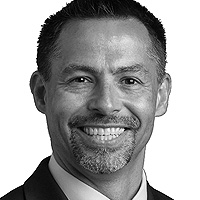Presented by Eric Walters • Chief Information Security Officer, Burns & McDonnell
What level of access are applications requesting and then receiving directly from your employees? Is the security team aware? Has the risk been quantified? Who is looking at the application Terms and Conditions or the End User License Agreement? Is the access overly permissive? What happens if the application vendor is hacked? Can the attacker access your data? Is the vendor liable?
Eric Walters, CISO and Director of IT Operations at Burns & McDonnell, will discuss these and many more perils and pitfalls of vetting applications and plugins.
Eric Walters is a seasoned information technology leader with over 25 years of security experience. He is capable of translating IT details into executive-level business decisions. Eric believes good compliance does not mean good security, nor does good security mean good risk management. Passionate for employee development. His experience includes healthcare compliance, software development, information security program management, cyber security managed services, global transition operations, infrastructure cloud operations, enterprise architecture, and document management, and is a retired Marine Officer.

